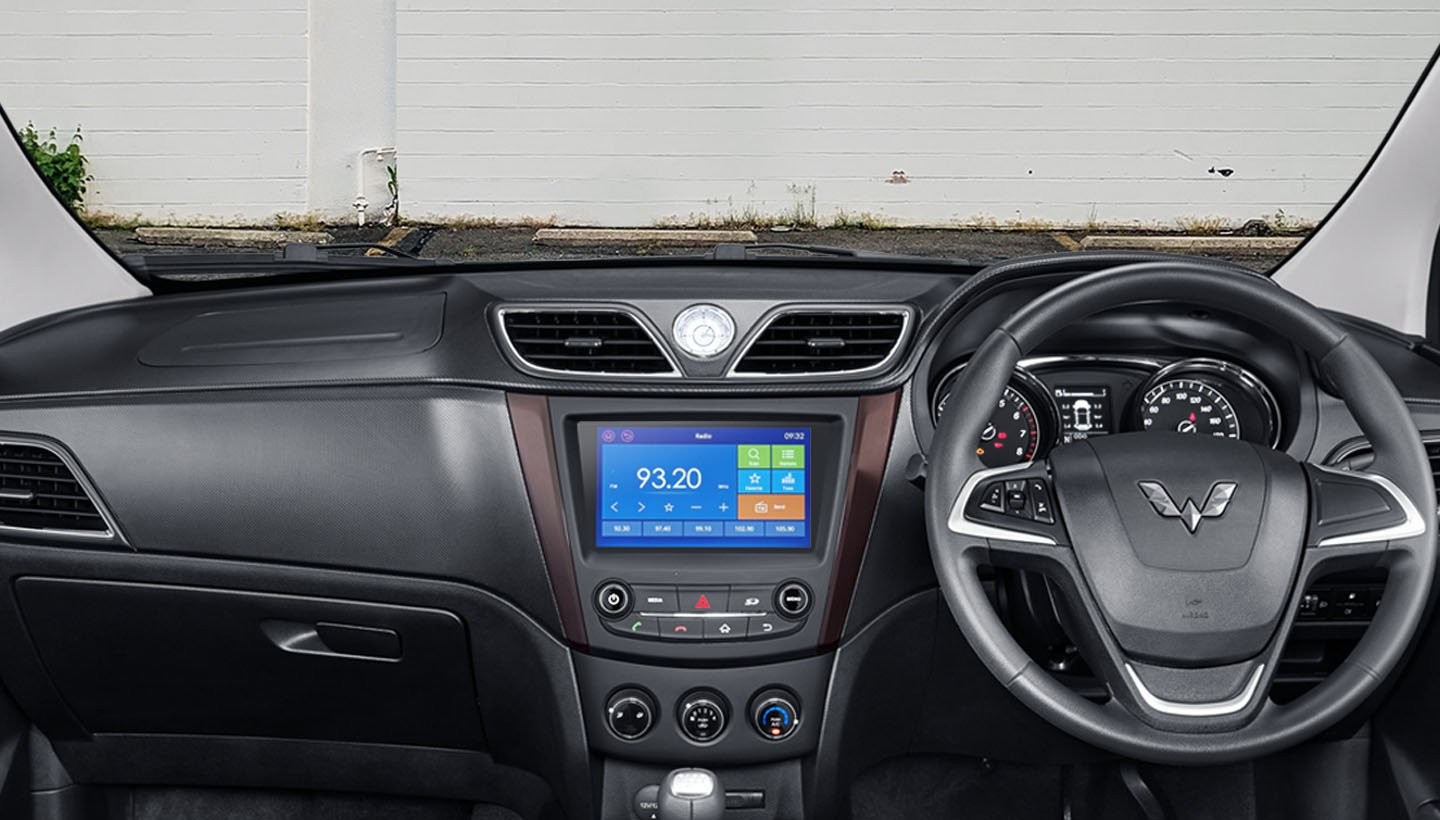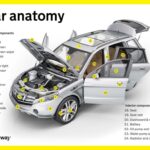The car dashboard, a vital component of your vehicle’s interior, is strategically positioned at the front of the car. It serves as the central hub for crucial vehicle information, housing various indicator panels that keep you informed about your car’s condition. Beyond its functional role, the dashboard also acts as a design element, separating the front section of the car from the driver’s area.
Dashboard designs are incredibly diverse, reflecting the brand’s identity and the vehicle’s features. Generally, more advanced features and sophisticated technology translate to higher quality and more complex dashboard designs.
Understanding the Car Dashboard
The dashboard plays an indispensable role in a car. Imagine a car without a dashboard – it would not only look incomplete but also feel disconcerting to drive. The dashboard is integral to both the aesthetics and the functional performance of a vehicle, contributing significantly to the overall driving experience.
A car dashboard is composed of numerous interconnected components, each playing a vital role and supporting the others. To truly understand your vehicle, familiarizing yourself with the various Car Dashboard Parts is a crucial first step. This knowledge empowers you to better interpret your car’s signals and operate it effectively.
Essential Car Dashboard Parts and Their Functions
Let’s delve into the key car dashboard parts and explore their specific functions:
1. Indicator Lights: Your Car’s Communication System
Car indicator lights are arguably the most immediately noticeable car dashboard parts. Positioned directly in the driver’s line of sight, these lights are designed to capture your attention and communicate vital information about your vehicle’s status.
Indicator lights cover a wide range of critical vehicle parameters. They can alert you to issues such as:
- Engine Temperature: Indicates if your engine is overheating, a serious condition requiring immediate attention.
- Door Status: Signals if any car doors are not properly closed, ensuring passenger safety.
- Airbag System: Confirms the readiness of your airbag system or warns of potential malfunctions.
- Braking System: Indicates issues with the brakes, including the parking brake being engaged or low brake fluid.
- Check Engine Light: Signals a potential problem with the engine or related systems, requiring diagnostic attention.
- RPM (Revolutions Per Minute): Displays the engine speed, crucial for efficient driving and gear shifting.
- Speedometer: Shows the vehicle’s current speed, essential for adhering to traffic regulations.
- Seat Belt Reminder: Prompts drivers and passengers to fasten their seat belts for safety.
- Odometer: Records the total distance the vehicle has traveled, used for maintenance scheduling and vehicle valuation.
Each of these car indicator lights utilizes distinct symbols and colors, often standardized across manufacturers, to ensure quick and universal understanding of the information being conveyed.
2. Glove Compartment: Convenient Storage at Your Fingertips
The glove compartment, also known as the car drawer, is a recessed storage space typically located directly in front of the passenger seat. This practical car dashboard part provides a secure and easily accessible area to store various items you might need while on the road.
While often overlooked, the glove compartment is intended for storing essential documents and small items. Recommended items to keep in your glove compartment include:
- Cell Phone Charger: Ensuring your phone remains charged, especially during long journeys.
- Flashlight: Invaluable for nighttime emergencies or when inspecting the car in low-light conditions.
- First Aid Kit: Essential for addressing minor injuries that may occur while driving.
- Owner’s Manual: Provides quick access to crucial information about your car’s operation and maintenance.
- Car Insurance Documents: Necessary for proving insurance coverage in case of accidents or traffic stops.
- Vehicle Registration: Proof of legal vehicle registration, often required during inspections or traffic stops.
Keeping these items organized and readily available in your glove compartment can enhance your preparedness and driving convenience.
3. Ignition System: Starting Your Engine
The ignition system is a fundamental car dashboard part, crucial for initiating your vehicle’s operation. Traditionally, the ignition key slot is located on the steering column, typically on the right-hand side. Inserting and turning your car key in this slot activates the ignition system, starting the engine.
Modern vehicles are increasingly adopting keyless ignition systems, often featuring a push-button start. While the mechanism differs, the function remains the same – to engage the car’s engine and electrical systems, preparing it for driving. The ignition system is a critical interface between the driver and the vehicle’s core functions.
4. Control Stalks: Managing Lights and More
Control stalks, or levers, are essential car dashboard parts extending from the steering column, providing fingertip control over various vehicle functions. Typically, you’ll find stalks on both the left and right sides of the steering wheel.
The left-hand stalk primarily manages:
- Turn Signals: Activating the turn signals to indicate your intended direction to other drivers.
- Headlights: Controlling the headlights for nighttime driving and improved visibility in low-light conditions.
- High Beam Headlights: Activating the high beams for enhanced visibility on dark, open roads.
- Fog Lights: Operating fog lights to improve visibility in foggy or heavy rain conditions.
The right-hand stalk usually controls:
- Windshield Wipers: Activating the windshield wipers to clear rain, snow, or debris from the windshield, ensuring clear visibility.
- Windshield Washer Fluid: Spraying washer fluid onto the windshield to aid in cleaning and removing stubborn dirt.
These control stalks are designed for intuitive operation, allowing drivers to manage essential functions without taking their hands off the steering wheel, contributing to safer driving.
5. Head Unit: Your Car’s Entertainment and Information Hub
The head unit, or infotainment system, is a central car dashboard part that serves as the entertainment and information hub of your vehicle. It significantly enhances the driving experience, providing features beyond basic audio playback.
Modern head units offer a wide array of functionalities, including:
- Music Playback: Playing music from various sources like radio, CDs, USB drives, and streaming services.
- Smartphone Integration: Connecting to smartphones via Bluetooth or USB for hands-free calling, music streaming, and navigation apps.
- Navigation System: Providing GPS-based navigation with maps and turn-by-turn directions.
- Vehicle Settings: Accessing and adjusting various vehicle settings, such as climate control, lighting, and driver assistance features.
- Backup Camera Display: Displaying the feed from the rearview camera when reversing, enhancing safety during parking maneuvers.
Head units are available in standardized sizes, primarily 1-DIN (single DIN) and 2-DIN (double DIN), referring to the height of the unit. DIN stands for Deutsche Institut für Normung, the German Institute for Standardization, which established these standard dimensions for car audio equipment.
6. Center Console Controls: Managing Core Vehicle Functions
The center console control panel, positioned centrally on the dashboard, houses a cluster of essential car dashboard parts for managing core vehicle functions. This section is designed for easy reach by both the driver and front passenger.
Typical controls found in the center console include:
- Hazard Light Switch: Activating the hazard lights to warn other drivers of potential hazards or emergencies.
- Climate Control System: Managing the car’s heating, ventilation, and air conditioning (HVAC) system to regulate cabin temperature and airflow.
- Radio and Media Controls: Often duplicated on the center console for easy access by both occupants.
- Other Vehicle Feature Controls: Depending on the vehicle model, this area may also include controls for features like parking assist, traction control, and driving mode selection.
The ergonomic placement of the center console controls ensures that drivers can easily adjust these functions while maintaining focus on the road.
Modern car dashboards are designed to enhance both functionality and driving pleasure. Understanding the different car dashboard parts and their functions is key to operating your vehicle safely and efficiently. By familiarizing yourself with these components, you can become a more informed and confident driver.

